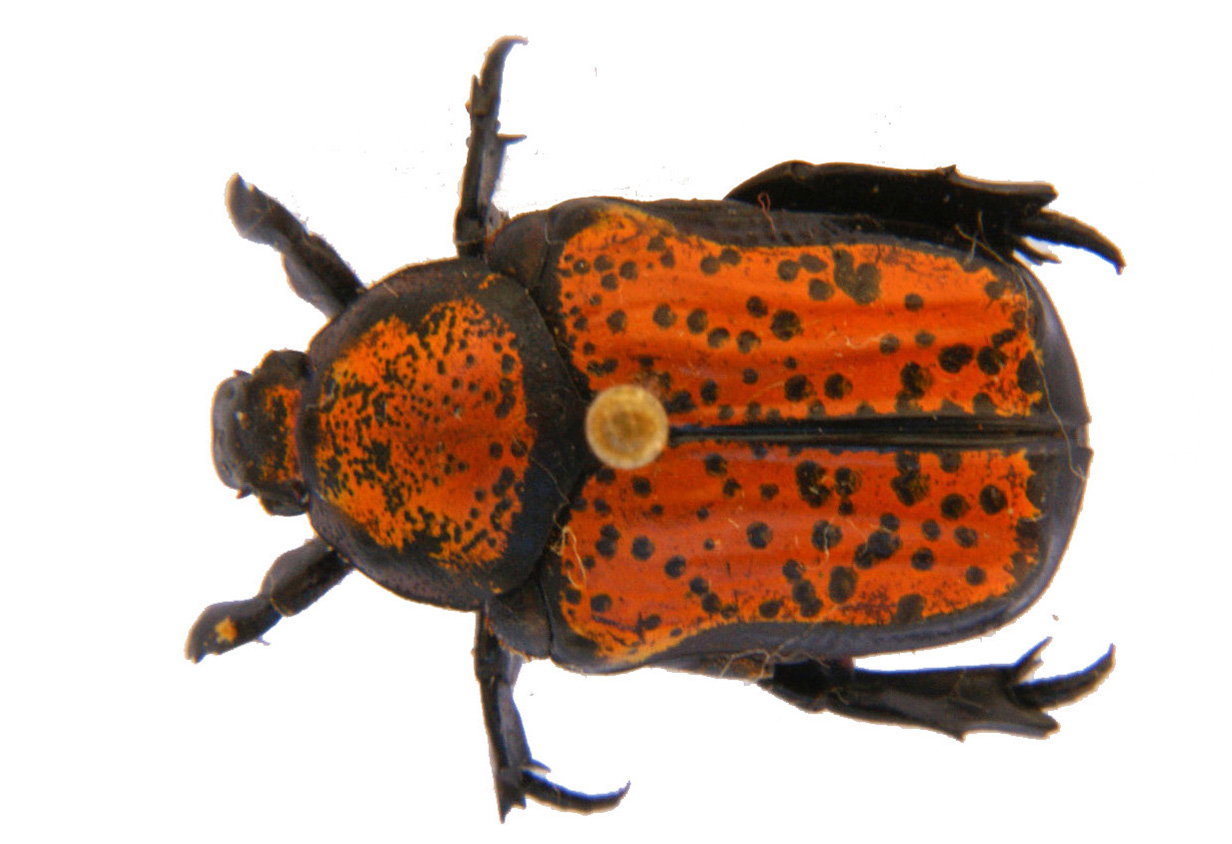Abstract
A total of 30 species of Gymnetini (Coleoptera: Scarabaeidae: Cetoniinae) are known from Argentina: Allorhina corni-frons (Gory & Percheron, 1833); Blaesia atra Burmeister, 1842; Blaesia subrugosa Moser, 1905; Desicasta purpurascens Schoch, 1898, dubious record; Gymnetis bajula (Olivier, 1789); Gymnetis bonplandi Schaum, 1844, new country record; Gymnetis bouvieri Bourgoin, 1912; Gymnetis bruchi Moser, 1910, new status (= Aemilius wagneri Le Moult, 1939, new synonymy); Gymnetis carbo (Schürhoff, 1937); Gymnetis chalcipes Gory & Percheron, 1833; Gymnetis cordobana (Schürhoff, 1937), new status; Gymnetis flavomarginata Blanchard, 1847; Gymnetis goryi Janson, 1877, new status; Gym-netis hebraica (Drapiez, 1820), new country record; Gymnetis hepatica Di Iorio, new species; Gymnetis litigiosa Gory & Percheron, 1833, new status; Gymnetis pantherina Blanchard, 1842 (= Gymnetis meleagris Burmeister, 1842, = Paragym-netis rubrocincta Schürhoff, 1937, new synonymy), new country record; Gymnetis pudibunda Burmeister, 1866; Gymne-tis schistacea Burmeister, 1847, new status; Gymnetis undata (Olivier, 1789); Heterocotinis semiopaca (Moser, 1907); Hologymnetis sp. (= Gymnetis rubida, not Gory & Percheron, 1833); Hoplopyga albiventris (Gory & Percheron, 1833); Hoplopyga brasiliensis (Gory & Percheron, 1833); Hoplopyga liturata (Olivier, 1789); Hoplopygothrix atropurpurea (Schaum, 1841), new country record; Marmarina insculpta (Kirby, 1819), new status, new country record; Marmarina tigrina (Gory & Percheron, 1833), (= Maculinetis litorea Schürhoff, 1937, new synonymy); Neocorvicoana reticulata (Kirby, 1819); Neocorvicoana tricolor (Schürhoff, 1933). Marmarina argentina Moser, 1917 is considered a nomen du-bium until a redescription and illustration of the type specimen facilitates the proper identification of this species. The fol-lowing type specimens were examined: Blaesia atra Burmeister, 1842 (holotype); Gymnetis alauda Burmeister, 1842 (holotype, = G. pantherina); G. bruchi (lectotype, here designated); G. dysoni Schaum, 1844 (paralectotype); G. meleagris Burmeister, 1842 (paralectotype, = G. pantherina); G. perplexa Burmeister, 1842 (holotype, = G. bajula); G. pudibunda (holotype); G. pudibunda porteri Dallas, 1930 (holotype, = G. pudibunda); G. punctipennis Burmeister, 1844 (paralecto-type); G. strobeli Burmeister, 1866 (holotype, = Marmarina tigrina); G. platensis Brèthes, 1925 (holotype, = Heterocotinis semiopaca), G. platensis tandilensis Bréthes, 1925 (holotype, = H. semiopaca); Coelocratus rufipennis (Gory & Percher-on, 1833) (lectotype, here designated); Trigonopeltastes geometricus Schaum in Burmeister & Schaum, 1841 (lectotype, here designated). Four species are endemic to Argentina (G. bouvieri, G. bruchi, G. cordobana, and G. pudibunda), but records of these species might be expected in the Bolivian and Paraguayan Chaco, as well as in Uruguay. Male parameres, armature of the internal sac of the aedeagus, and the general aspects of adults are presented. An additional six species of Cetoniinae bring the total number in Argentina to 36 species: Euphoria lurida (Fabricius, 1775) (Cetoniini); Cyclidius elongatus (Olivier, 1789) (Cremastocheilini); and Inca bonplandi (Gyllenhall, 1817), Inca clathrata clathrata (Olivier, 1792), Inca pulverulenta (Olivier, 1789), and Trigonopeltastes triangulus (Kirby, 1819) (Trichiini). New records in adja-cent countries are four species for Bolivia from a total of 18, 17 of 24 for Paraguay, and two of 10 for Uruguay; 25 species are shared between Argentina and Brazil (three are new records for Brazil).

